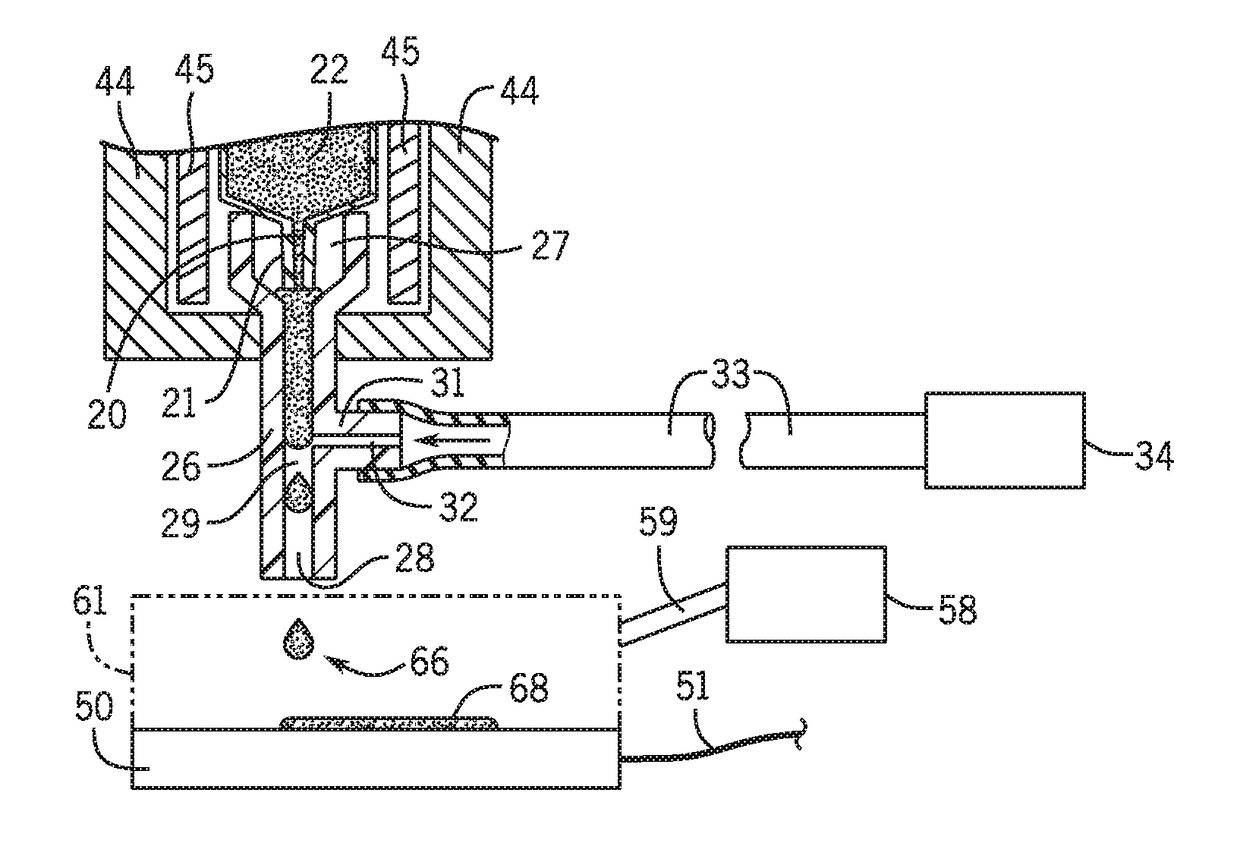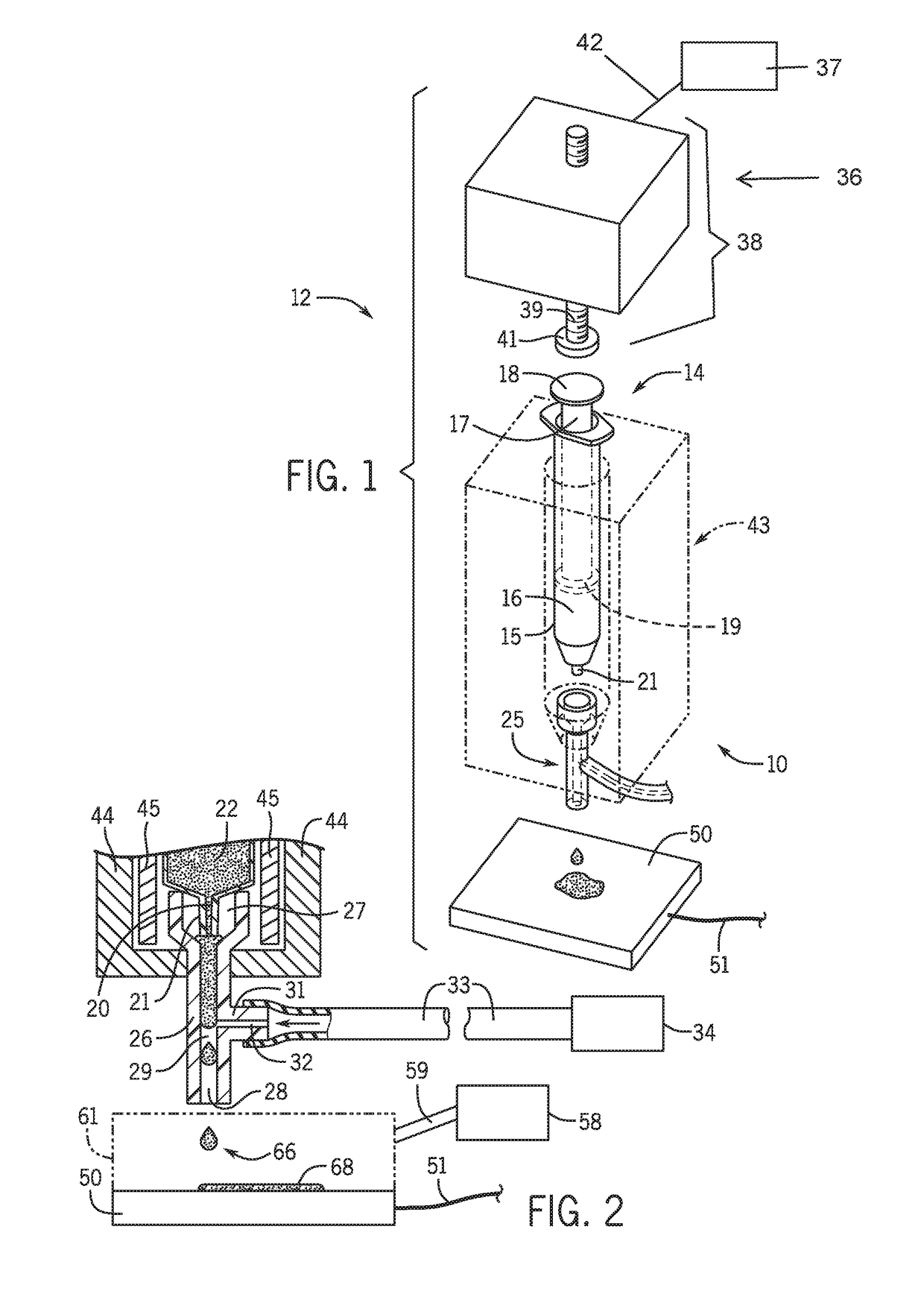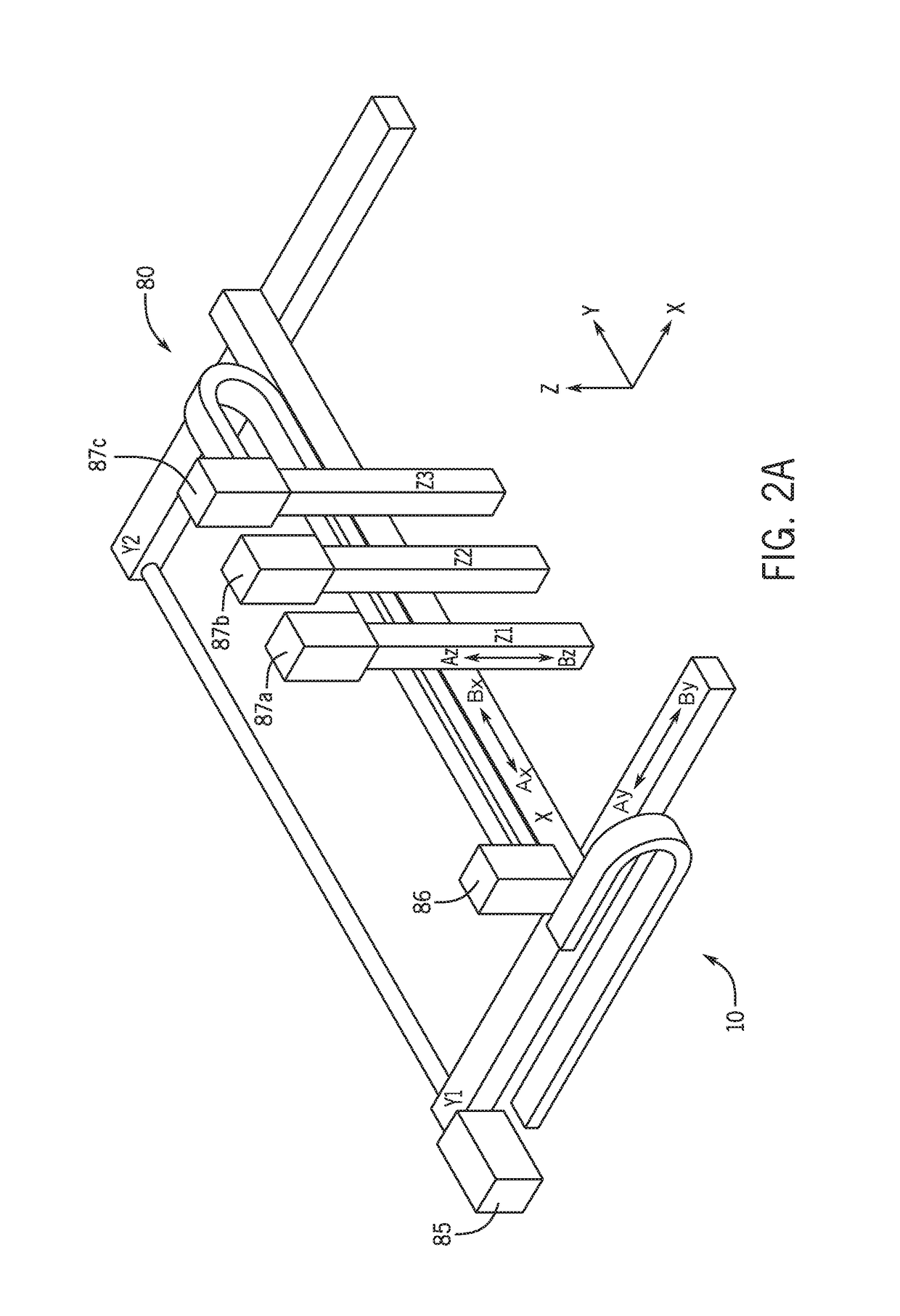Three dimensional microtissue bioprinter
a bioprinter and microtissue technology, applied in the field of three-dimensional bioprinting, can solve the problems of inability to print contact live cells, slow throughput of bioprinters, and inability to allow microtissue printing, etc., to achieve the effect of improving the position control of dispensed materials, high cell viability, and not being able to use conventional cell aggregation techniques
- Summary
- Abstract
- Description
- Claims
- Application Information
AI Technical Summary
Benefits of technology
Problems solved by technology
Method used
Image
Examples
example 1
[0061]Example 1 describes the development of injectable mesenchymal stem cells (MSCs) microtissues for repairing cartilage defects using 3D bioprinting. This is a representative project for our high speed bioprinting in which we bioprint micro-cartilage and bone tissues using human bone marrow mesenchymal stem cells (MSCs). We have successfully bioprinted micro bone tissue and MSC-incorporated-tissue for cartilage and bone regeneration. Our bioprinted micro-tissue is predeveloped and mechanically enhanced in vitro. Once injected in vivo, the tissues self-assemble into large tissue amalgamations which can repair the defects.
Introduction
[0062]Articular cartilage exhibits poor intrinsic capacity for repair, and tissue engineering is a new approach for articular cartilage repair. Bone marrow mesenchymal stem cells (MSCs) and bulk hydrogel have been used to repair the cartilage defects in open surgery. As a minimally invasive approach is always preferred for joint surgery, injectable tis...
example 2
[0082]Example 2 describes high throughput 3D bioprinting of tumor micro tissues for drug development and personalized cancer therapy.
Introduction
[0083]Cancer caused about 25% of all deaths in the United States in 2014. In vitro anti-cancer drug screening is widely used in the pharmaceutical industry and chemosensitivity test for patients. However, only 2D assays and simple 3D culture models were used previously. But these models do not resemble the native tumor microenvironment, or yield inaccurate prediction of drug sensitivity. In this example, we report a novel 3D bioprinted model of tumor microtissues (TMTs), which resemble the native tumor characteristics, for high throughput screening. We characterized the 3D bioprinted tumors in various of aspects.
Methods
[0084]3D bioprinting: The bioink composed of tumor cells, stromal cells and ECM is loaded into our custom developed 3D bioprinter of the present invention. Micro tumor tissues were directly bioprinted into each well of a 96 o...
example 3
[0100]We 3D bioprinted liver tissues. Specifically, we have successfully bioprinted vascularized human micro liver tissues using HepG2 human liver cells and human endothelial cells. As shown in FIG. 21, the vascularized micro liver tissues show significant higher cell density (A) and viability (B) comparing with non-vascularized micro liver tissues (C and D).
[0101]Thus, the invention provides a three dimensional microtissue bioprinter and methods for using the three dimensional microtissue bioprinter. We have disclosed a computer controlled programmable 3D bioprinter for generating live micro tissues with precisely controlled micro-scale accurate XYZ motion and volumetric nanoliter dispensing capability. We have printed many types of tissue with many different types of cells including pluripotent stem cells, bone marrow mesechymal stem cells, osteoblasts, fibroblast, human endothelial cells, liver cells, and many different tumor cells.
[0102]We have bioprinted micro tumor tissues for...
PUM
| Property | Measurement | Unit |
|---|---|---|
| volume | aaaaa | aaaaa |
| inner diameter | aaaaa | aaaaa |
| diameter | aaaaa | aaaaa |
Abstract
Description
Claims
Application Information
 Login to View More
Login to View More - R&D
- Intellectual Property
- Life Sciences
- Materials
- Tech Scout
- Unparalleled Data Quality
- Higher Quality Content
- 60% Fewer Hallucinations
Browse by: Latest US Patents, China's latest patents, Technical Efficacy Thesaurus, Application Domain, Technology Topic, Popular Technical Reports.
© 2025 PatSnap. All rights reserved.Legal|Privacy policy|Modern Slavery Act Transparency Statement|Sitemap|About US| Contact US: help@patsnap.com



